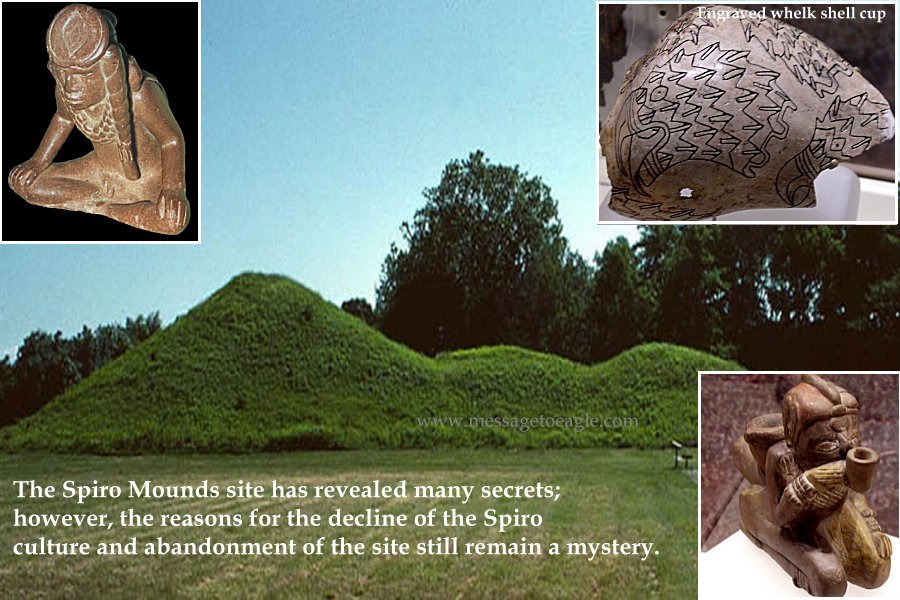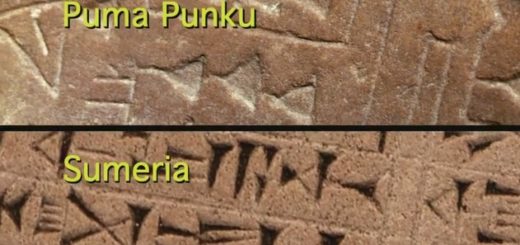Unsolved Prehistoric Enigma Of Sophisticated Spiro People And Their Mysterious Mounds
 One of the most important archaeological discoveries in Oklahoma and the entire North America was the Spiro Mounds Site. The people of Spiro Mounds once ruled most of present day America.
One of the most important archaeological discoveries in Oklahoma and the entire North America was the Spiro Mounds Site. The people of Spiro Mounds once ruled most of present day America.
The site, which lies near the Arkansas River seven miles north of the town of Spiro, was occupied by various groups of people who camped on or near the Spiro area for at least 8000 years.
From 850 to 1450 AD, the location was permanently inhabited by Caddoan speaking Indians (the modern Kichai Wichita, Arikara Caddo, and Pawnee.).
The settlement began as a small farming village and became the intriguing, important and famous seat of ancient Mississippian culture, in what later became the United States.
These people developed horticulture, elaborate ceremonies, mound building and an iconographic writing system with over 60 different tribes, stretching from the Rockies to the Virginia Coast and from the Gulf Coast to the Great Lakes.
The Spiro’s trading network was vast. According to Mississippian settlements like Cahokia and Spiro contributed to a vast trading network that covered the eastern half of what is now the U.S. and parts of what is now the Western U.S. as well.
They built large, complex earthworks, which included eleven platform mounds and one burial mound in an 80-acre (0.32 km2) area on the south bank of the Arkansas River. The central part of the site were the nine mounds surrounding an oval, large and leveled central ceremonial plaza, which was used for important religious rituals.
The largest platform mound – Brown Mound – served as a place of complex rituals, associated with the deaths and burials of Spiro’s rulers. The Spiro inhabitants lived in a village closed to the ceremonial plaza and additionally, more than twenty similar villages were situated within five miles distance from the Spiro center and many other village sites – all representing the same culture – were found within a radius of 100 miles (160 km) away.
They created an important religious and political center of about 10,000 people that thrived along the Mississippi River and influenced the entire Southeast. The Spiro Mound center declined and was eventually abandoned by 1450 AD, although the city was continuously occupied for about 150 years.
The site remained unoccupied from A.D. 1600 until 1832.
In 1936, archeologists from the University of Oklahoma were able to excavate as much as possible from the Spiro site, which was exposed to major damage due to looting of its artifacts.
In a cavity of the Craig Mound (“The Spiro Mound”), the only burial mound of the Spiro site, archaeologists excavated many artifacts made of wood, conch shell, and copper, including basketry, vegetal and animal fibers, woven fabric of lace, fur, and feathers.
The Spiro Mounds site has revealed many secrets; however, the reasons for the decline of the Spiro culture and abandonment of the site still remain a mystery.



 Creators of mankind
Creators of mankind Description of “Tall white aliens”
Description of “Tall white aliens” Where they came from?
Where they came from? About hostile civilizations
About hostile civilizations The war for the Earth
The war for the Earth “Tall white aliens” about eternal life
“Tall white aliens” about eternal life Video: “Nordic aliens”
Video: “Nordic aliens” Aliens
Aliens Alien encounters
Alien encounters The aliens base
The aliens base UFO
UFO Technology UFO
Technology UFO Underground civilization
Underground civilization Ancient alien artifacts
Ancient alien artifacts Military and UFO
Military and UFO Mysteries and hypotheses
Mysteries and hypotheses Scientific facts
Scientific facts


















